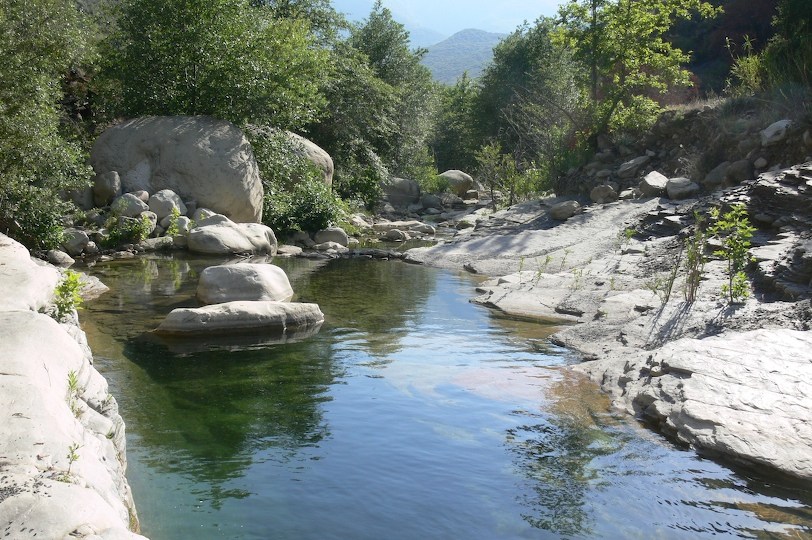EDITOR’S NOTE | By Bret Bradigan
SCOUR POWER
It Will Take Years, if ever, for Ventura River Watershed to Recover
Until recently, the Middle Fork of Matilija Creek was a vigorous year-round stream; meandering through emerald pools with shady, fern-lined grottos, populated by native rainbows lazily feeding in the depths, and rare western pond turtles sliding and gliding into the water upon your approach. No more.
My girlfriend and I discovered for ourselves the devastation wrought by the Jan. 9th debris flow, a direct consequence of the Thomas Fire, this past weekend when we rode our bikes several miles into the aching heart of the Middle Fork.
It was my favorite place in Ojai’s backcountry for overnight camping and also for picnicking on hot days because of its cool, deep swimming holes. Nearly every year I’d hike up the six or seven miles to the three falls just to be surrounded by nature’s protective beauty with its endless layers of shale and granite. Plunging into that cool, sometimes cold, water after a long, hot hike was a transcendental experience.
It is an important stretch of the river because of Matilija Dam, now 70 years old and silted up so it’s useless for flood control, and which has ruined the-once productive steelhead trout runs into their prime spawning beds upstream from the dam. If the dam ever does come down, those much-needed sands will come down to restore Ventura’s rocky beaches and the steelhead will go up to complete their life cycles.
But six years of drought and now the fire has left the Matilija drainage scoured out, as though by a brillo pad made with house-sized boulders.
It looked much like the Montecito debris flow, except gratefully without tragic loss of lives. Thankfully, the flows dispersed before they reached the houses downstream. But, it left little in its wake. The stream now runs warm and thin, devoid of life, let alone trout and turtles. The trees that once shaded the creek and formed the deep pools for which it was justly prized were swept away and jumbled up on the high-water mark 20 feet up the hillsides like so many pick-up sticks. You’d be hard-pressed to get wet in the remaining trickle.
It will take years to recover, if it ever does. Maybe we are already well into the much-predicted “new normal” of low rainfall and catastrophic events from climate change. I hope not.
In any event, hope makes bad policy, if that hope is for returning to some prior condition that we may never see again. I do have hope that there’s a lot we can do as a community to protect ourselves from further drought. We need to move quickly on the “Three Sisters Plan,” so we are connected to the State Water Project and to work together as a valley-wide community on conservation plans and projects.
For example, we need to map out a plan for all the relatively inexpensive things we can do to make the most of the water that does fall. Berms, basins and cisterns should be our new mantra, as Conor Jones, the permaculture advocate puts it. We have to look at storage, not drainage.
For example, we could take a note from the Los Angeles River project (on a tiny scale, of course) with our own concrete drainage channel that runs, aptly enough, down Drown Street and behind Fox Street to where it meets up with San Antonio Creek below the Ojai Valley Athletic Club. A lot of these projects can be done at modest cost by landowners with bulldozers and cistern installations. Slow down the drainage, allow it to percolate back into the water table, and the water can have a chance to fill our wells and feed our orchards.
We at the Ojai Hub, along with our sister publications, Ojai Monthly and Ojai Quarterly, will continue to keep you updated as our community addresses the existential threat of lack of water. For example, this November we have four open seats on the city council due to 2014’s ill-designed Measure A, by which voters directly elect the mayor every two years. Casitas also has open seats come this November.
While we may get used to hearing that every election is the most important of our lifetimes, that doesn’t mean it’s not true. It’s as true as we make it.


All too true. Who knows what tomorrow,may bring. Certainly feels like a long dry spell so far…